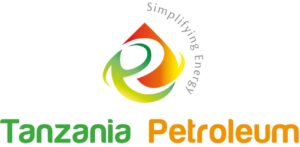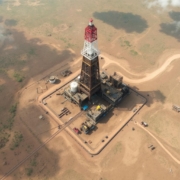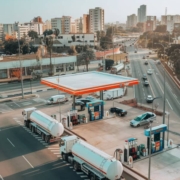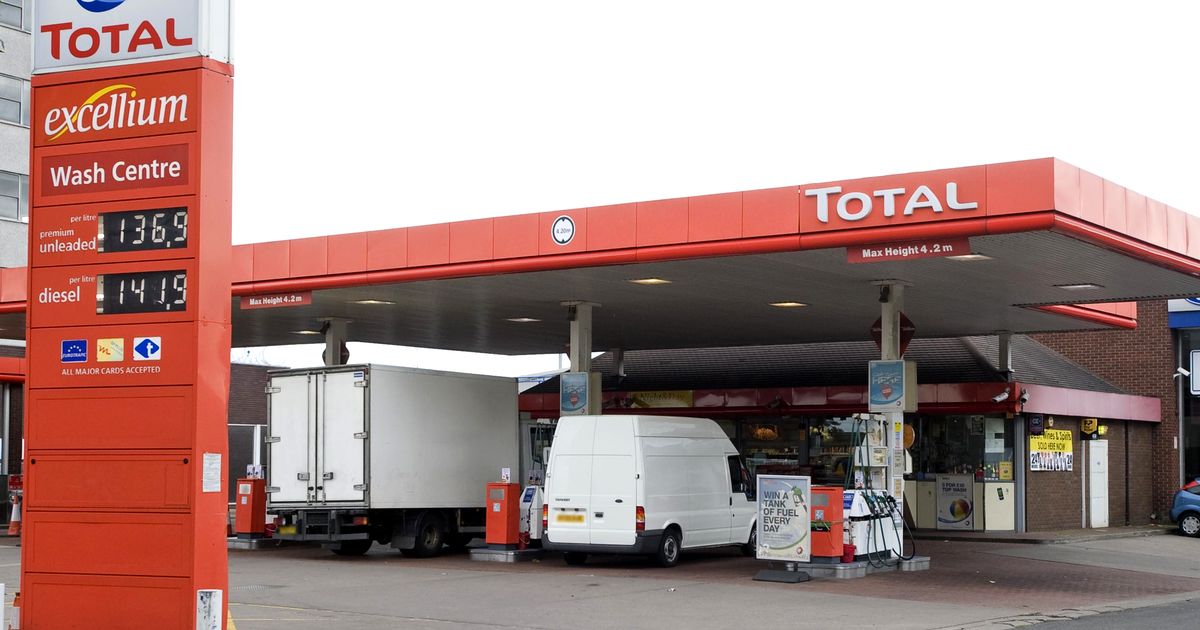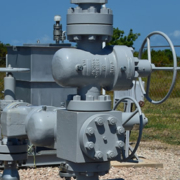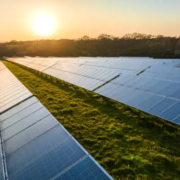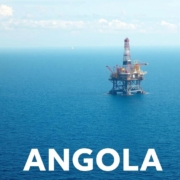- Executive Summary
Mission Statement
RadiantSun Energy Solutions is committed to revolutionizing the energy landscape in Tanzania by producing high-quality, cost-effective solar photovoltaic (PV) panels. Our mission is to contribute to a sustainable future by harnessing the abundant solar energy in the region, reducing dependency on non-renewable energy sources, and providing affordable, reliable, and clean energy solutions for residential and commercial applications.
Company Overview
RadiantSun Energy Solutions (RadiantSun) is an innovative startup positioned at the forefront of the renewable energy industry in Tanzania. Our primary focus is the production and sale of high-efficiency solar photovoltaic (PV) panels. Leveraging state-of-the-art manufacturing technology and strategic partnerships, RadiantSun aims to meet the growing demand for renewable energy solutions while fostering socio-economic development and environmental sustainability.
RadiantSun is founded by a team of seasoned professionals with extensive experience in the renewable energy sector, engineering, and business management. Our facilities are strategically located in Dar es Salaam, optimizing logistical efficiency and accessibility. The company’s comprehensive approach includes rigorous R&D, an environmentally conscious manufacturing process, thorough quality control, and responsive customer support.
Key Success Factors
- Local Market Understanding: Deep knowledge of the Tanzanian market’s energy needs and constraints allows RadiantSun to tailor its products and services to local demand, cultural nuances, and economic conditions.
- Technological Innovation:Adoption of cutting-edge technology to maximize the efficiency and durability of our PV panels. Continuous investment in R&D ensures that we stay ahead of industry trends and technological advancements.
- Strategic Partnerships: Forming alliances with local and international stakeholders, including suppliers, financial institutions, government bodies, and community organizations, to strengthen our market position and operational effectiveness.
- Quality and Reliability: Our stringent quality control processes guarantee that each panel meets international standards, offering unmatched reliability and performance to our customers.
- Environmental Impact: Commitment to sustainable practices in production and distribution aligns with increasing global consciousness and government policies on climate change and renewable energy.
- Human Capital: Assembling a diverse team of skilled professionals, providing ongoing training, and fostering an inclusive culture to drive innovation and operational excellence.
- Customer-Centric Approach: Developing robust customer support systems to ensure a seamless experience from purchase through installation and maintenance. Our customer satisfaction strategies will build brand loyalty and repeat business.
Product and Services
This section details the products and services that RadiantSun Solar offers within the Tanzanian market. With a focus on harnessing the abundant solar energy available in the region, our mission is to provide reliable, efficient, and cost-effective solar solutions to both residential and commercial customers.
Description of Solar PV Products
RadiantSun Solar specializes in the production and distribution of high-quality solar photovoltaic (PV) panels, leveraging advanced photovoltaic technology to ensure optimal energy conversion and efficiency. Our product line includes:
Solar Photovoltaic Panels
Our primary product is a range of solar PV panels designed to meet various energy needs:
– Monocrystalline Solar Panels: Known for their high efficiency and sleek aesthetics, monocrystalline panels are composed of single-crystal silicon. They are ideal for residential and commercial installations that require high energy output per square meter.
– Polycrystalline Solar Panels: These panels are crafted from multiple silicon crystals, offering a cost-effective solution with slightly lower efficiency compared to monocrystalline panels. They are well-suited for large installations where space is less of a constraint.
– Thin-Film Solar Panels: Utilizing amorphous silicon, cadmium telluride, or copper indium gallium selenide, thin-film panels offer flexibility and lower weight. They are perfect for applications where traditional rigid panels cannot be installed, such as on curved surfaces or portable units.
Solar Accessories and Components
Beyond solar panels, RadiantSun Solar offers a variety of essential accessories and components to ensure a comprehensive solar energy solution:
– Inverters: Converting the generated DC power into AC power for household or industrial use, our inverters are available in multiple capacities and types, including string inverters, microinverters, and hybrid inverters.
– Mounting Systems: We provide robust and durable mounting solutions for rooftop, ground-mounted, and pole-mounted solar arrays, ensuring ease of installation and long-term stability.
– Solar Batteries: Our lithium-ion and lead-acid batteries offer reliable storage solutions for off-grid and grid-tied systems, enabling energy independence and resilience.
– Charge Controllers: To maximize battery life and ensure efficient charging, our charge controllers manage the power flow between the solar panels and the storage units.
Production Process
The production process at RadiantSun Solar is designed to maintain high quality and efficiency at every stage. Our state-of-the-art manufacturing facility is equipped with the latest technology and follows industry best practices:
Raw Material Sourcing
We source high-purity silicon wafers from reputable suppliers around the world. Ensuring the quality of raw materials is the first step in guaranteeing the performance and durability of our products.
Wafer Processing
Silicon wafers undergo precision cutting and shaping to the desired specifications. This stage involves:
– Doping: Introducing impurities to silicon wafers to enhance their electrical properties and ensure efficient energy conversion.
– Texturing: Creating a textured surface on the wafers to reduce reflectance and increase light absorption.
– Anti-Reflective Coating: Applying a specialized coating to further minimize losses due to reflection.
Cell Assembly
Processed wafers are assembled into solar cells through a series of steps, including:
– Front and Back Metallization: Adding metal contacts to the front and back surfaces of the solar cells to facilitate electrical connectivity.
– Testing and Sorting: Each cell is tested for efficiency and output before being sorted and grouped based on performance metrics.
Module Assembly
Solar cells are then assembled into modules, also referred to as solar panels:
– Lamination: Encapsulating the solar cells between layers of EVA (ethylene-vinyl acetate) and tempered glass to protect against environmental factors.
– Framing: Adding an aluminum or stainless-steel frame to enhance structural integrity and ease of installation.
– Junction Box Installation: Affixing a junction box to the module to house electrical connections and diodes.
Quality Control and Testing
Each panel undergoes stringent quality control tests, including:
– Electroluminescence Testing: Identifying micro-cracks and defects within the cells.
– Flash Testing: Measuring the power output under controlled light conditions.
– Environmental Testing:Exposing panels to simulated environmental conditions (e.g., temperature, humidity) to assess long-term durability.
Service Offerings
Beyond manufacturing and distributing high-quality solar products, RadiantSun Solar provides a suite of services designed to support our customers from initial consultation through to post-installation maintenance. Our service offerings include:
5.3.1 Installation Services
Our experienced team of certified installers ensures that every solar power system is tailored to meet the specific needs of our clients. This includes:
– Site Assessment: Conducting a thorough evaluation of the installation site to determine solar potential, structural integrity, and orientation.
– System Design: Creating a customized solar solution based on the energy requirements, space available, and budget constraints.
– Installation Execution: Performing professional installation, including mounting of the panels, wiring, and system integration.
Maintenance Services
Maintenance is crucial for the longevity and efficiency of solar power systems. RadiantSun Solar offers comprehensive maintenance packages, such as:
– Routine Inspections: Periodic inspections to identify and rectify potential issues before they impact system performance.
– Cleaning Services: Regular cleaning of panels to remove dust, debris, and dirt that can reduce efficiency.
– Performance Monitoring: Utilizing advanced monitoring systems to track energy production and detect anomalies in real-time.
Repair Services
Despite rigorous quality control, issues may occasionally arise. Our repair services include:
– Diagnostic Services: Identifying and troubleshooting system malfunctions to determine the cause and extent of the issue.
– Component Replacement: Providing and installing replacement parts, such as inverters, batteries, or damaged panels.
– Emergency Response: Offering prompt support to our customers in case of urgent repairs, minimizing downtime and energy loss.
Quality Assurance and Control
At RadiantSun Solar, quality assurance and control are integral to our operations. Ensuring the reliability and performance of our products and services is paramount. Our quality control mechanisms include:
Standards and Certifications
We adhere to international standards and obtain necessary certifications to validate our commitment to excellence, such as:
– ISO 9001: Certification for quality management systems, ensuring consistent product quality and customer satisfaction.
– TUV Certification:Independent testing and certification for product safety and performance according to stringent criteria.
– IEC 61215 and IEC 61730: Compliance with international standards for the design, construction, and safety of photovoltaic modules.
In-House Testing
Each solar panel undergoes rigorous testing protocols within our facility to ensure:
– Efficiency Testing: Measuring the energy conversion efficiency under standardized conditions.
– Durability Testing: Assessing resistance to environmental stressors, such as temperature variations, humidity, and mechanical load.
– Safety Testing: Verifying electrical safety, including insulation resistance and leakage currents.
Continuous Improvement
Quality control is not a one-time activity but a continuous process aimed at improvement. To ensure ongoing quality improvement, we implement:
– Feedback Loops: Collecting feedback from customers and installers to identify areas for enhancement.
– Regular Audits: Performing internal and external audits to assess our compliance with quality standards and identify any gaps.
– Employee Training: Investing in regular training programs for our staff to keep them updated on the latest industry practices and technologies.
Supplier Quality Management
To ensure that the quality of raw materials meets our stringent standards, we:
– Evaluate Suppliers: Conduct thorough evaluations and audits of potential suppliers before onboarding them.
– Monitor Deliveries: Perform regular inspections and quality checks on delivered materials to verify compliance with our specifications.
Customer Support.
Providing excellent customer support is a key component of our quality assurance strategy. Our customer support services include:
– Technical Assistance: Offering technical support to customers for troubleshooting and maintenance.
– Warranty Services: Providing robust warranties for our products, ensuring peace of mind for our customers.
– Training Programs: Conducting training sessions for customers and installers to ensure proper handling and maintenance of our solar systems.
By delivering high-quality products and services and implementing comprehensive quality control measures, RadiantSun Solar aims to establish itself as a leading provider of solar solutions.
Get the Full Version Now
In the full version, you will have access to the following table of contents:
- Executive Summary
– Mission Statement
– Company Overview
– Key Success Factors
- Industry Analysis
– Global Solar PV Industry Overview
– Solar PV Industry in Tanzania
– Regulatory Environment
– Key Industry Trends
- Market Analysis
– Market Segmentation
– Target Market Identification
– Market Needs and Customer Pain Points
– Competitive Landscape
– SWOT Analysis (Strengths, Weaknesses, Opportunities, Threats)
- Company Description
– Business Description
– Legal Structure and Ownership
Employees roles and responsibilities
– Location and Facilities
– Company Vision and Goals
- Product and Services
– Description of Solar PV Products
– Production Process
– Service Offerings (e.g., installation, maintenance)
– Quality Assurance and Control
- Business Model
– Revenue Streams
– Pricing Strategy
– Cost Structure
– Profit Margins
- Marketing and Sales Strategy
– Marketing Objectives
– Marketing Mix (Product, Price, Place, Promotion)
– Sales Strategy and Channels
– Customer Relationship Management
– Advertising and Promotion Plan
- Operational Plan
– Operations Strategy
– Supply Chain Management
– Production Plan
– Inventory Management
– Human Resources Plan
- Financial Plan
– Startup Costs
– Revenue Projections
– Expense Projections
– Break-even Analysis
– Funding Requirements and Strategy
– Financial Statements (Income Statement, Cash Flow Statement, Balance Sheets)
– Financial Ratios and Performance Metrics
- Risk Analysis and Management
– Identification of Key Risks
– Risk Mitigation Strategies
– Contingency Plans
- Sustainability and Social Responsibility
– Environmental Impact
– Community Engagement
– Ethical Considerations
– Corporate Social Responsibility (CSR) Initiatives
- Implementation Timeline
– Milestones and Key Activities
– Project Timeline
For the complete business plan for starting and running a LP Cooking gas business in Tanzania, make a payment of $200 (or its equivalent in Tanzanian Shillings TZS 400,000) through Tgo pesa, M-pesa to this number: +255655376543.
Once your payment is done, send an SMS to +255655376543 with the following details:
- Your full name.
- Your email address.
Alternatively, send an email with the above details to info@tanzaniapetroleum.com. The moment we receive your email or SMS and we confirm your payment, the plan will be delivered to your email address (in docx) within fifteen minutes.
You can then download it and read it on your smartphone or computer.
If you’re not in Tanzania, send an email to info@tanzaniapetroleum.com and we will devise a payment option for you.
